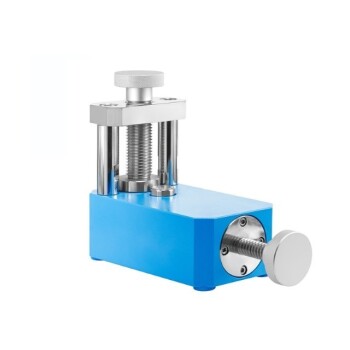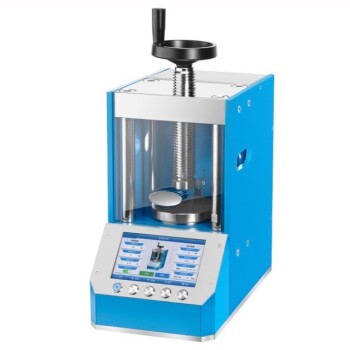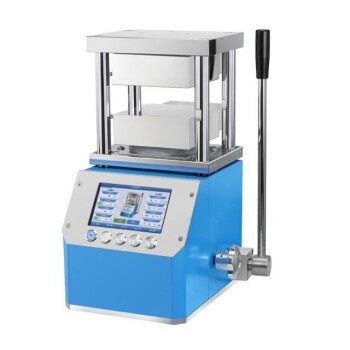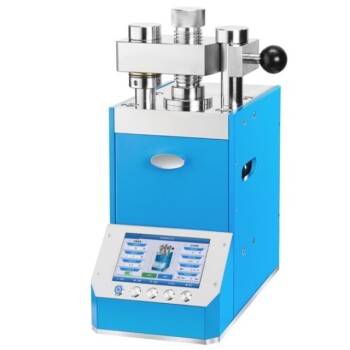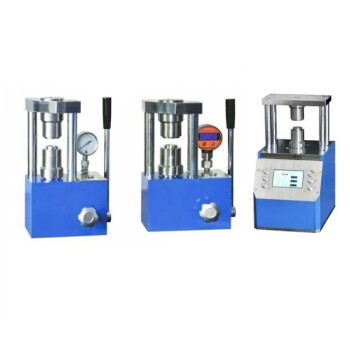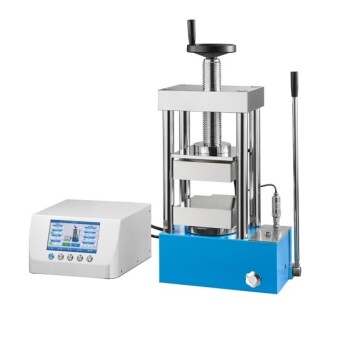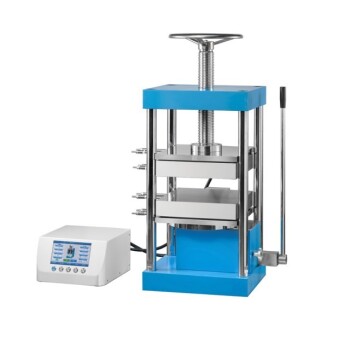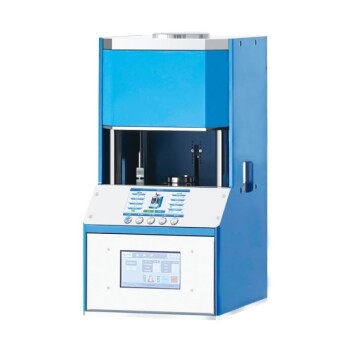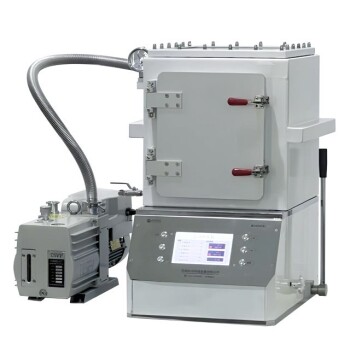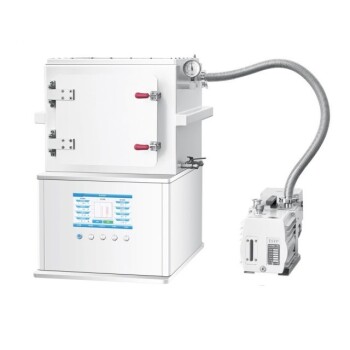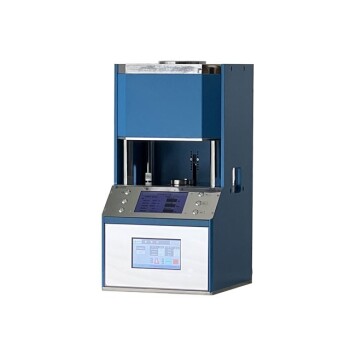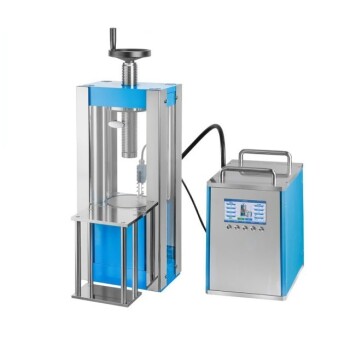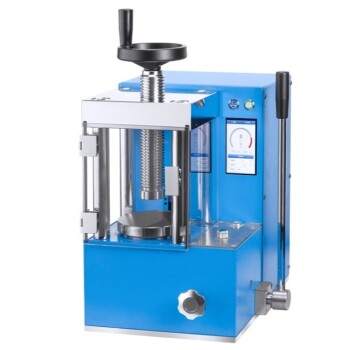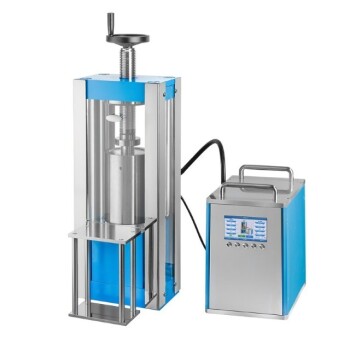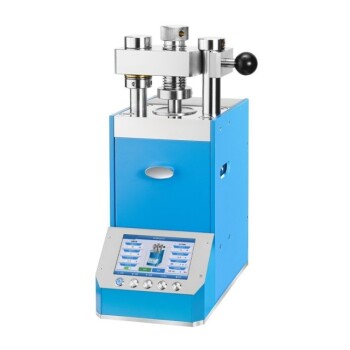In short, hydraulic presses are foundational to nearly every modern manufacturing sector. Key industries that rely on this technology include automotive, aerospace, general manufacturing, and construction. They are prized for their ability to deliver immense, controllable force for shaping, forming, and assembling a vast range of materials.
The widespread adoption of the hydraulic press is not just due to its power, but its unique ability to apply and sustain that force with precision. This makes it the essential tool for tasks where both immense strength and careful control are non-negotiable.
The Core Principle: Why Hydraulic Force Dominates
A hydraulic press operates on a simple but powerful concept known as Pascal's Principle. A force applied to a contained fluid is transmitted equally in all directions, allowing a small initial force to be multiplied into an immense output force.
Unmatched Force Generation
The primary advantage is the ability to generate tonnage that is impractical or impossible for other press types. This is essential for working with high-strength metals and large components.
Precision and Control
Unlike mechanical presses that deliver maximum force only at the bottom of their stroke, a hydraulic press can apply full, consistent pressure throughout its entire stroke. This control is critical for complex forming operations.
Versatility in Application
A single hydraulic press can be reconfigured with different dies and settings to perform a wide array of tasks. This adaptability makes it a valuable asset for shops that handle diverse projects, from stamping and forging to assembly.
Key Applications Across Industries
The versatility of hydraulic presses means they are used for a wide range of specific tasks. These applications are often grouped by the type of work being performed.
Metal Forming and Shaping
This is the most common use case. Operations include forging, stamping, drawing, and coining metal into specific shapes. This is how automotive body panels, aircraft fuselage parts, and structural steel beams are made.
Compression and Compacting
Hydraulic force is ideal for compressing materials into a dense, solid form. This includes compression molding of plastics and rubber, as well as compacting powders to create parts or prepare samples for laboratory analysis.
Assembly and Joining
The controlled force of a hydraulic press is perfect for assembly operations. This includes tasks like pressing bearings into housings, crimping electrical connectors, and riveting structural components together.
Specialized and High-Precision Work
The reliability and precision of hydraulic presses make them crucial for high-stakes manufacturing. They are used to shape critical components like aerospace turbine blades and produce medical-grade implants, where failure is not an option.
Understanding the Trade-offs
While powerful, hydraulic presses are not the universal solution for every application. Understanding their limitations is key to making an informed decision.
Speed vs. Power
Hydraulic presses are generally slower than their mechanical counterparts. For high-volume, repetitive tasks like simple stamping, a mechanical press may offer a higher parts-per-minute output.
System Complexity
Hydraulic systems rely on fluid, pumps, hoses, and seals. This introduces a need for regular maintenance to prevent leaks and ensure consistent performance, adding to the operational overhead.
Energy Consumption
Maintaining high pressure in a hydraulic system can be energy-intensive, especially during long press cycles. This can lead to higher operational costs compared to purely mechanical systems in certain scenarios.
Making the Right Choice for Your Application
Selecting the correct pressing technology requires a clear understanding of your primary goal.
- If your primary focus is forming complex parts or working with tough materials: A hydraulic press is the superior choice due to its consistent force and control.
- If your primary focus is maximum speed for high-volume, simple stamping: A mechanical press may provide a better return on investment.
- If your primary focus is versatility across a wide range of jobs: The adaptability of a hydraulic press to different force, speed, and die requirements makes it an invaluable asset.
Ultimately, the hydraulic press remains an indispensable enabler of modern industrial production, turning raw materials into the high-performance components that define our world.
Summary Table:
| Industry | Key Applications |
|---|---|
| Automotive | Stamping body panels, forging parts |
| Aerospace | Shaping fuselage, turbine blades |
| General Manufacturing | Compression molding, assembly |
| Construction | Forming structural beams |
Need a reliable hydraulic press for your lab or manufacturing needs? KINTEK specializes in lab press machines, including automatic lab presses, isostatic presses, and heated lab presses, designed to deliver precise force and versatility for tasks like metal forming and powder compacting. Enhance your efficiency and quality—contact us today to find the perfect solution for your laboratory requirements!
Related Products
- Laboratory Hydraulic Press 2T Lab Pellet Press for KBR FTIR
- Automatic Laboratory Hydraulic Press Lab Pellet Press Machine
- Manual Heated Hydraulic Lab Press with Integrated Hot Plates Hydraulic Press Machine
- Automatic Laboratory Hydraulic Press for XRF and KBR Pellet Pressing
- Laboratory Hydraulic Press Lab Pellet Press Button Battery Press
People Also Ask
- What are the advantages of using the hydraulic portable press for making KBr pellets? Achieve Superior FT-IR Sample Prep
- How is a hydraulic press used in sample preparation for spectroscopy? Achieve Accurate and Homogeneous Sample Pellets
- How are hydraulic presses used in spectroscopy and compositional determination? Enhance Accuracy in FTIR and XRF Analysis
- How is a laboratory hydraulic press used in sample preparation for FTIR spectroscopy? Create Transparent Pellets for Accurate Analysis
- What are the main advantages of using hydraulic presses for sample preparation? Achieve Precise, Uniform Samples for Reliable Analysis
